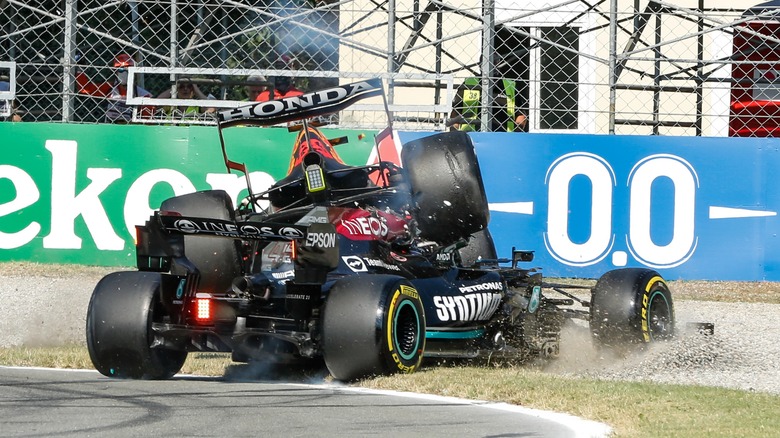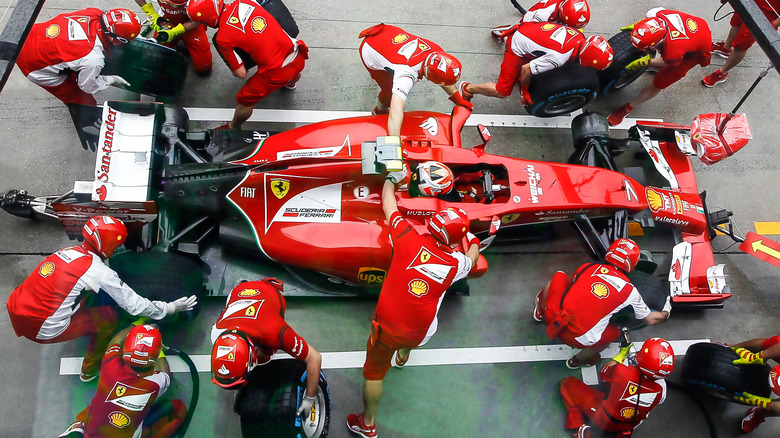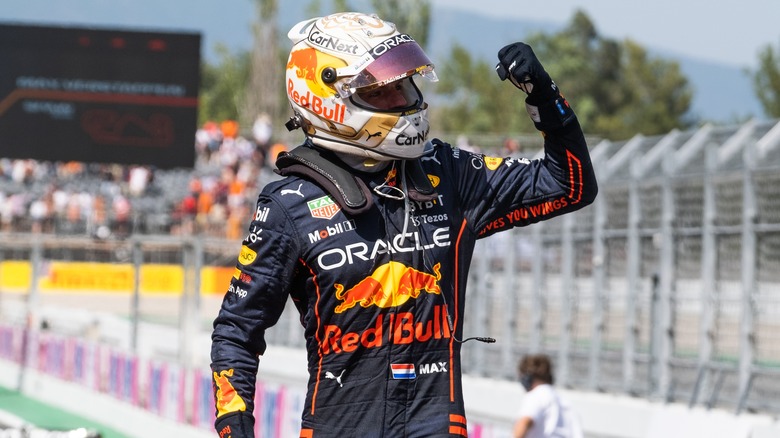What Makes F1 Crashes So Incredibly Expensive
Formula 1 draws an enormous fanbase every year. The races are exciting, and drivers can shift their fortunes in an instant with a successful pass or a costly mistake that leads to a crash. Formula 1 cars are a marvel of modern engineering, and the vehicles are built for speed, aerodynamic capability, and of course, a touch of beauty.
Unfortunately, one thing that's intimately linked to the majesty and incredible pace of a Formula 1 race is the devastation that occurs when a car collides with the boundary or two drivers crash into one another while circumnavigating the track. Formula 1 collisions are simply a hazard of the sport, and drivers are well trained to deal with the spin-out and intense forces that come along with a loss of grip while driving (Essentially Sports notes that a recent Max Verstappen crash registered at 51Gs). But rescuing the driver from a collision is only the first step in returning the driver and car to the track. When a Formula 1 car crashes it must be thoroughly inspected in order to undergo necessary repairs that will put it back in pole contention. These efforts can be immensely costly, and with new rules governing the amount teams are able to spend over the course of the season, according to Autosport, the price tag attached to repairs after a crash is more important than ever.
Parts are custom-fabricated
There are thousands or even tens of thousands of parts that make up an F1 car. These parts range from simple to immensely complicated. As with any car crash, an impact can jar loose all sorts of tiny pieces from within the vehicle, leading to a far greater replacement or repair requirement than simple body repairs. This is true for any kind of car crash, as speed is a determining factor in both overall damages to the vehicle and the extent of injury to the people involved. Considering that F1 cars can exceed speeds of 200 mph (via Seed Scientific), the force of impact is magnified tremendously over the average collision on a public roadway.
The first thing that typically breaks in an F1 collision is the wheel assembly, followed by the nose and wing segments. Tires and nose assemblies are designed to be interchangeable so that they can be swapped out a number of times throughout a race. This also makes them fragile when it comes to impact. MotorBiscuit reports that the front wing assembly on an F1 car costs at least $200,000. MotorBiscuit also reports that fuel tanks cost around $140,000 and the gearbox can rise to as much as $600,000. These are all incredibly expensive components that may need to be repaired or replaced entirely after an F1 car has been in a collision.
Price caps and mind games
With new rules governing how teams can spend money over the course of the season, the importance of repair on a wrecked car is greater than ever before. The price cap set at $145 million in 2021, $140 million in 2022, and $135 million beyond these years, according to Sky Sports, can easily be surpassed over the 20+ races after factoring in bad luck on a track, which can demand multiple expenditures of millions of dollars. That's on top of the research and development, fabrication, and testing of cars that can add up to tens of millions for each vehicle produced.
As the season wears on, the impact of this price cap will certainly grow more menacing. This has led many team principals to start pointing fingers at the drivers of other teams when repairs need to be made to their own cars (via Autoweek).
But the cost of the car isn't the only thing a team must incur when putting a driver back in action. The force of an impact on a public road often results in the need for physical therapy and perhaps even mental health counseling. Drivers are sometimes hesitant to confidently retake the road after even a minor collision. A person recovering from a crash might be able to take their time in getting back into the swing of things, but a professional driver must be ready to hit the circuit once again after just a short period of time between races.


